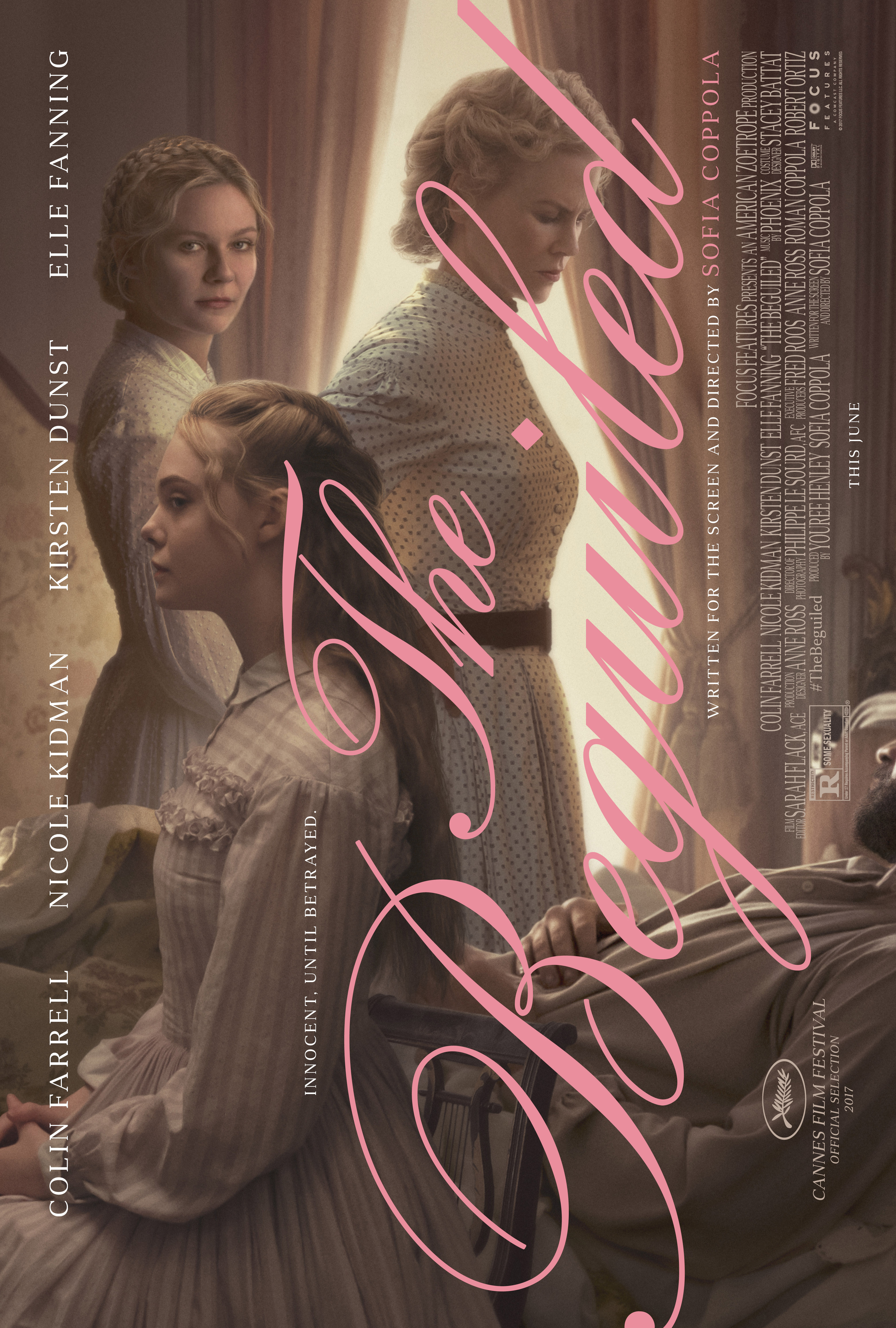Shot in and around New Orleans’ Madewood Plantation House in Napoleonville, LA, acclaimed writer, actress, and director Sofia Coppola brings to the screen Thomas Cullinan’s novel The Beguiled.
Laced with elements of a taut psychological thriller, the tale unfolds in 1864 Virginia, three years into the Civil War at a southern girls’ boarding school and then one of the sheltered young woman take in a wounded Union soldier for refuge. As the women tend to his wounds, the house is taken over with sexual tension, dangerous rivalries, and taboos are broken in an unexpected turn of events.

When and how did you come across the source material of Thomas Cullinan’s novel The Beguiled?
My friend and production designer, Anne Ross, had first told me about the movie The Beguiled, which I had never seen but which I knew was highly regarded. I watched it, and the story just kept staying in my mind, how it was weird and the turns were unexpected. I would never think to remake a movie, but I was curious so I got the book it was based on.
I thought, what about retelling the story from the women’s point of view? So The Beguiled would be a reinterpretation, the premise is loaded because power dynamics between men and women are universal. There’s always a mystery between men and women.
In the 1971 movie, there was an African-American character, Hallie, portrayed by Mae Mercer. Did you consider her storyline for this telling?
I didn’t want to have a slave character in The Beguiled because that subject is a very important one, and I didn’t want to brush over it lightly. This movie is about this one group of women left behind during the War.
And there’s fewer girls at the school in your movie than in The Beguiled…
The idea is that a lot of them left –
So this isn’t a remake but rather an adaptation, which you have done before. Was the book told from the male point of view?
No, it’s written by a man but it’s told from the women’s point of view; each chapter is a different woman telling her story.
Did you consider changing the book’s setting?
People said to me, “Oh, you could set it somewhere else.” But I was fascinated by the Civil War-era South, and at how women were raised at that time to be in relation to men to be delicate and attractive and to be good hostesses, their whole roles revolved around men, but then the men were gone…what was it like for them, left on their own to survive and to sustain?
You have said that you try to make personal films. What is personal about The Beguiled for you?
With any movie, I never know until later on. Things I’ve seen, people I know become part of it. But I’ve always been intrigued by how women interact, and I’ve seen how they can sometimes change when there’s a man around.
As the project was coming together, how did you decide on Philippe Le Sourd as your cinematographer? This is his first feature with you.
I had worked with him before, on a few commercials. He is such an artist; I felt he could bring something beautiful to The Beguiled .
I was so happy to be able to shoot on film, with vintage lenses, because it’s getting more and more rare. The look of this movie had to be soft and gauzy, but also sun-drenched in a hot locale and with a lot of smoke. The characters are being stifled, including with sexual repression.
What aspired you to film in New Orleans?
Yes, a real location with oak trees and Spanish moss. Madewood Plantation House is a beautiful setting but it also has darkness underneath because of the history of its being a plantation.
I wanted to feel the insects, the lushness…The group can no longer keep the area groomed because there’s not enough of them and the grounds people have left. So there are vines growing upwards, adding to the feeling of danger even though they’re keeping up lacy curtains and nice stuff inside. There’s this contrast: the house is very refined, and then nature outside is overgrown and wild.
And there’s the contrast between the women: they’re in pastel dresses and then this dirty, ragged man arrives. They have lots of layers of clothes; they’re overheated, but they can’t wear sundresses. They’re always buttoned up in a hot temperature.
Costume designer Stacey Battat and I did decide that the women would not be wearing the big hoop skirts any more; they’re just wearing the dresses without those. So the dresses look like ones that could be worn today; I wanted the costumes to feel true to the period but also relatable, authentic but also attractive to a modern eye.
What’s one reason you were able to shoot this movie in just 26 days.
We had a good local team in Louisiana.
The Beguiled opens everywhere June 30th.






